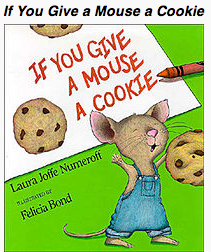How do you promote a culture of kindness and empathy in your classroom?
Of course we want kids to be kind in general, but why does it really matter so much in a classroom?
From my years of experience, it's sort of like the chain reaction described in the "If You Give A Mouse A Cookie" story.
If they are without conflict resolution strategies, you'll likely spend all day mediating disagreements.
If you spend all your time on disagreements, you may have less time and energy to teach effective lessons, and students may not complete those lessons because they'll be too busy arguing, crying, tattling...
I'm sure you know exactly what I mean!
This year I had the most challenging group of students I've had in 20 years. I used not just one, but many different strategies and programs to help them stay on track! (You can see all of the classroom management systems here if you're struggling!)
However, my most effective tool was creating a classroom where the students value kindness and contributing to a positive environment.
Here are a few ideas to build an environment of kindness in your class:
1. Read stories that promote kindness, such as "Ordinary Mary's Extraordinary Deed" by Emily Pearson. Here's a link to part of the story on youtube.
2. Read "Have You Filled A Bucket Today"by Carol McCloud. In our class "bucket filling" has become common language that we all understand.
There's even a song about filling buckets on youtube.
3. During writing time with your class, have students write a "Happy Note" to the special helper of the day. Students drop their note into the Happy Bucket.
Later, I collect them and we read them together.
4. Consider beginning each morning with a Friendship Circle, where students sit in a circle and give a compliment to the person sitting to the right, and that person says "Thank you" until you've gone all the way around. The last person gets to say something nice to the teacher!
**One of my favorites was when a student had to give me a compliment, and he took some time to look at me up and down, and then finally said, "I like how you smell like strawberry jam."
Turns out it was my strawberry shampoo!
5. If your special helper takes your attendance to the office like mine does, decide as a class on a compliment to deliver to the secretary. We love to do this each day, and we wait for our helper to get back so we can hear what the secretary's reaction was to the compliment. We say things like: "You look beautiful today." or "I like your personality." or " I appreciate you."
**A recent favorite was when a little boy named Sam told the secretary "I just love the way your hair is all grey and white and just very puffy on the sides."
When we asked about her reaction to such a nice compliment, the student said, "She just thanked me and turned around, and I saw her shoulders shaking, so I guess she really liked it."
Each student receives a blank template page to complete at home. Together with family members, they will write about an act of kindness that they experienced or heard about. There are no specific rules - the point is simply to generate discussion.
When the pages are returned to school, we read each one and then bind the pages into a class book. I sometimes display the pages in the hallway first, so that the school can learn what we are doing. How great would this be as a school-wide project?
Click here to download your own copy of this Random Acts of Kindness class book.
I hope you can use some of these ideas to promote kindness with your students! How do you encourage kindness in your classroom?









Great post Susanna! I love all your kindness ideas. It is so true that if you teach these skills explicitly, students will learn to problem solve. :)
ReplyDeleteShelley